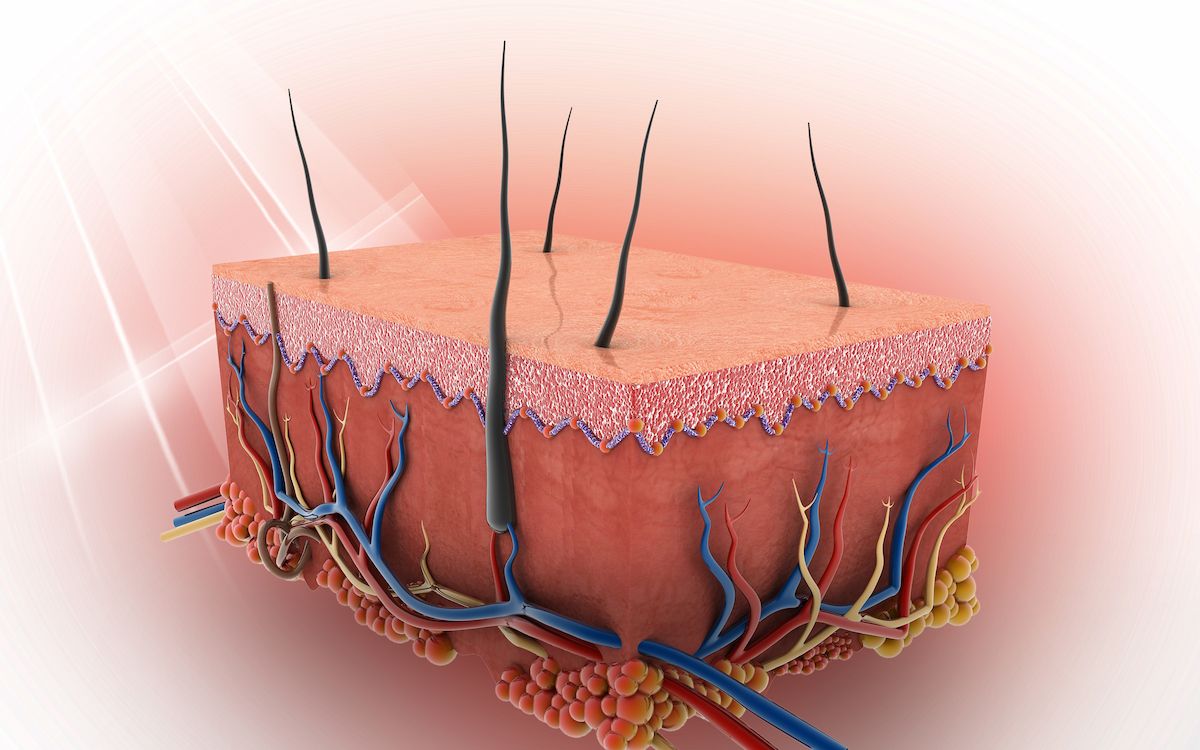DecisionDx-Melanoma Test Accurately Identifies Low-Risk SLN Positivity
All patients identified as low risk for sentinel lymph node positivity with the DecisionDx-Melanoma test had recurrence-free status after 3 years.
Previous findings from the DECIDE study published in the World of Surgical Oncology showed a significant 18.5% reduction in the number of SLN biopsies performed vs a comparison cohort where the DecisionDx test was not used in the SLN biopsy decision-making process.

The DecisionDx-Melanoma test accurately identified patients with melanoma who have a low risk for sentinel lymph node (SLN) positivity, according to results from the DecisionDx-Melanoma Impact on Sentinel Lymph Node Biopsy Decisions and Clinical Outcomes (DECIDE) study published in Cancer Medicine.1
Data from the study revealed that among 130 patients with cutaneous melanoma identified as low-risk for SLN positivity, defined as having a less than 5% chance of a positive SLN biopsy, no patients had recurrence regardless of SLN status at the time of last follow-up, good for a 3-year recurrence-free survival rate of 100%. Of patients with a Class 1A 3-GEP result, or those identified as “low risk,” 48.5% underwent an SLN biopsy with a 3.2% SLN positivity rate, and 51.5% did not undergo SLN biopsy.
“Decision-making for patients whose staging-based risk falls within or around the 5% to 10% threshold...can be challenging. Our study findings underscore the strength of the DecisionDx-Melanoma test to accurately identify patients with T1 to T2 tumors who have a low risk of metastasis and can safely forgo [SLN biopsy], within guideline recommendations, without experiencing a melanoma recurrence,” lead study author J. Michael Guenther, MD, surgeon at St. Elizabeth Physicians in Edgewood, Kentucky, said in a news release.2 “As evidenced by the study data, use of the test’s results can significantly reduce unnecessary [SLN biopsy] procedures while decreasing complication rates and reducing costs associated with the procedure. This test helps enable clinicians to focus surgical procedures on patients more likely to have a positive node.”
Previous findings from the DECIDE study published in the World of Surgical Oncology showed a significant 18.5% reduction in the number of SLN biopsies performed vs a comparison cohort where the DecisionDx test was not used in the SLN biopsy decision-making process.3 Furthermore, of 35 patients with known SLN status who had a low risk for SLN biopsy positivity, 0% had a positive SLN. Additionally, authors noted that as many as 32.4% of T1a tumors, 28.4% of T1b tumors, 12.9% of T2a tumors, and 12.5% of T2b tumors could have had a reduction in SLN biopsy rates without missing a positive SLN.
Patients in the DECIDE study with cutaneous melanoma with T1 and T2 tumors who were being considered for SLN biopsy were included in the final study analysis. A review of all clinical data, as well as the DecisionDx-Melanoma results, informed patient-provider decisions to perform or avoid a SLN biopsy. Following treatment, clinicians recorded whether a SLN biopsy was performed and factors that influenced the decision.
Among those identified as low risk within the DECIDE study, the median age was 65 years (range, 25-87), the median Breslow thickness was 0.9 mm (range, 0.2-1.9), and the ulceration status was largely unknown (96.9%). A total of 40.0% had a confirmed transected base, 41.5% did not, and the median mitotic rate was 1/mm2 (range, 0-10). A total of 46.9% had SLN-negative status, with 51.5% of the SLN statuses being unknown; 43.1% had T1b tumors, 33.1% had T1a tumors, and 22.3% had T2a tumors.
“DecisionDx-Melanoma helps empower patients and clinicians to make more informed, risk-aligned decisions about whether to safely forgo or pursue an SLNB based on the patient’s personal risk of SLN positivity,” Guenther said in the news release.2 “Importantly, decisions to forgo the procedure can be made with confidence when guided by a low-risk DecisionDx-Melanoma test result.”
Current NCCN guidelines suggest that patients with stage IA melanoma that is less than 0.8 mm deep with no ulceration would benefit from foregoing SLN biopsy.4 NCCN guidelines suggest considering SLN biopsy in the case of stage 1b cancer that is either less than 0.8 mm deep with ulceration or 0.8 to 1 mm deep with or without ulceration. Additionally, surgery is recommended for stage 1B or higher cancer that is more than 1 mm deep with an in-transit metastasis or local recurrence.
References
- Guenther JM, Ward A, Martin BJ, et al. A prospective, multicenter analysis of recurrence-free survival after sentinel lymph node biopsy decisions influenced by the 31-GEP. Cancer Med. Published online April 1, 2025. doi:10.1002/cam4.70839
- Publication of data from prospective, multicenter study demonstrates positive survival outcomes in patients with low-risk melanoma who avoided sentinel lymph node biopsy with information from Castle Biosciences’ DecisionDx®-Melanoma Test. News release. Castle Biosciences. April 3, 2025. Accessed April 3, 2025. https://tinyurl.com/bdd9rsz5
- Guenther JM, Ward A, Martin BJ, et al. A prospective, multicenter analysis of the integrated 31-gene expression profile test for sentinel lymph node biopsy (i31-GEP for SLNB) test demonstrates reduced number of unnecessary SLNBs in patients with cutaneous melanoma. World J Surg Onc. 2025;23(1):5. doi:10.1186/s12957-024-03640-x
- NCCN. Clinical Practice Guidelines in Oncology. Melanoma, version 2.2025. Accessed April 3, 2025. https://tinyurl.com/429w9zsw